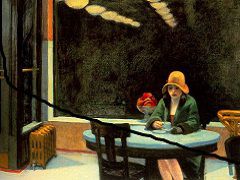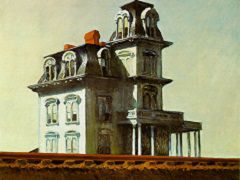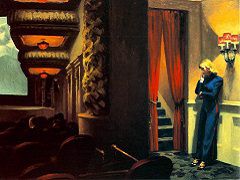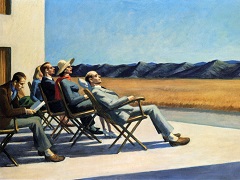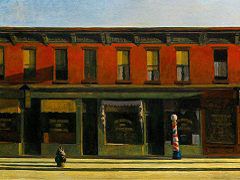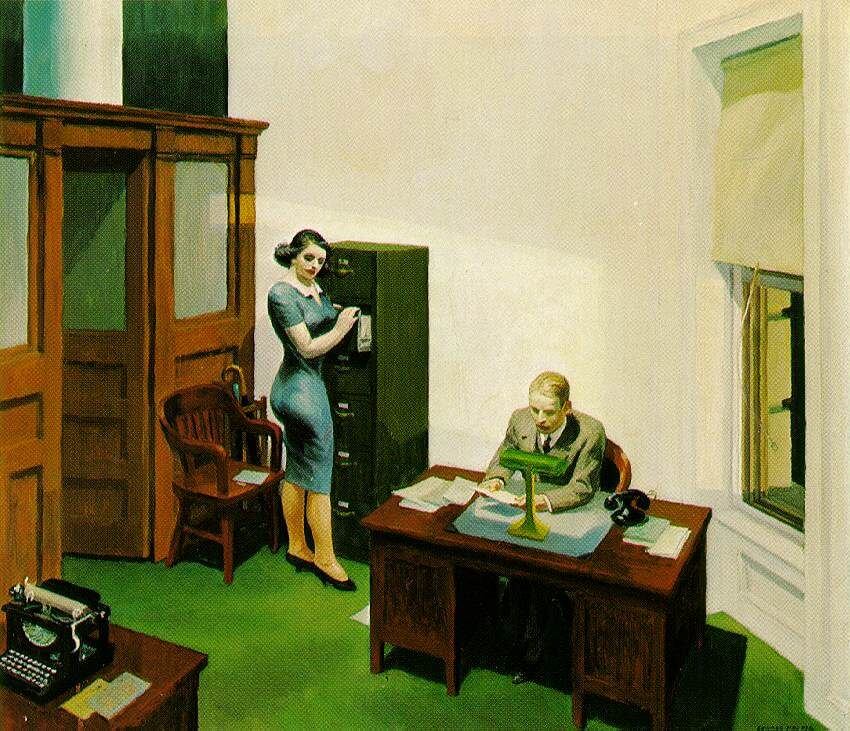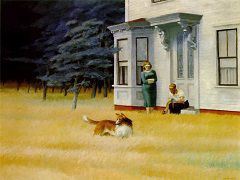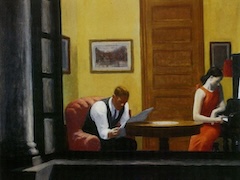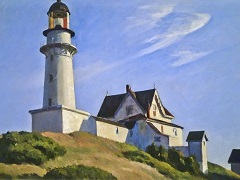Drugstore, 1927 by Edward Hopper
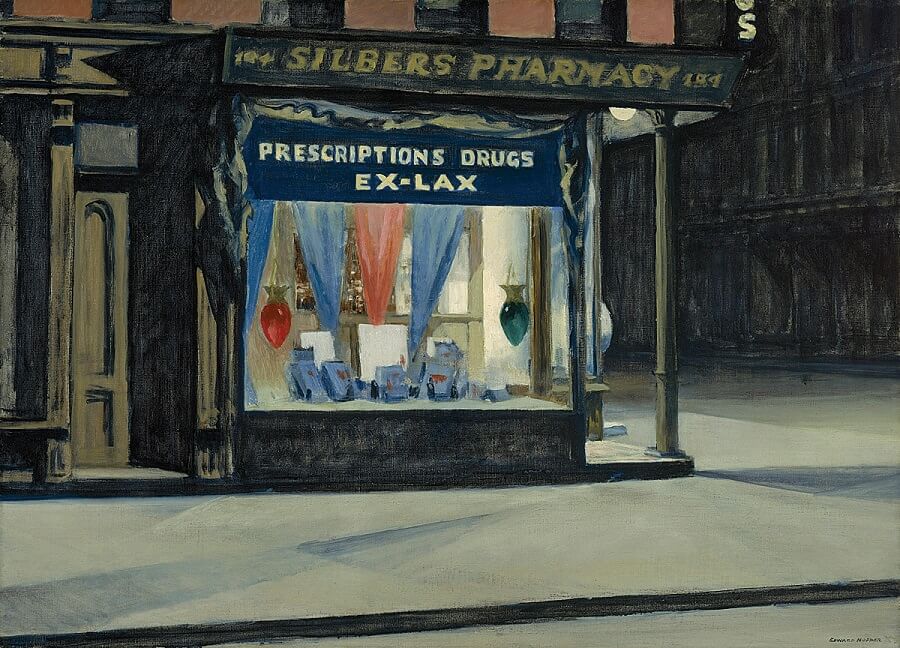
The steady rhythm of Hopper's life is reflected in the structure of his paintings, which are all variations on a few basic themes. A summary of these motifs leads directly to the center of his work: houses in the sunlight on a coastline or in the country, surrounded by trees and bushes with a unique intensity and atmosphere. And his cities: often pure architectural masses towering above the human figures. Finally, man himself in rooms and in front of houses, quiet and introverted, which is why no real encounter takes place between his figures.
What is important is how Hopper saw his objects, preferring to portray them early in the morning or at night, removed from human presence. In Drugstore, the objects in the shop windows take on an unusual, compelling aura in the neon light or early-morning sun. And his portrayal of architecture, emphasizing the formal, disregards the human element. The houses in pictures like Early Sunday Morning or House by the Railroad display such individuality that they can be seen as independent entities.


